Univeristy of Illinois researchers analyzed 30 years worth of data from the U.S. corn belt on crop performance and herbicide use. They found on average air temperatures below 18.9 C or above 25 C made fomesafen, glyphosate and mesotrione less effective on waterhemp, giant foxtail and morning glory species.
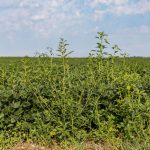
Will agricultural weeds claim the upper hand in a changing climate?

Near-infrared spectroscopy models can analyze corn kernels, biomass
New research from the University of Illinois Urbana-Champaign demonstrates that near-infrared spectroscopy (NIR) and machine learning can provide quick, accurate and cost-effective analysis of raw agriculture products.
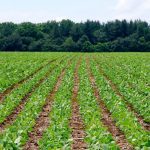
Breeding more resilient soybeans may come down to test site selection
Science Notes: New maps aim to help breeders strategize placement
In the quest to optimize crop productivity across environments, soybean breeders test new cultivars in multiple locations each year. The best-performing cultivars across these locations are selected for further breeding […] Read more
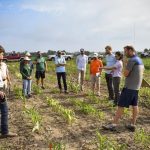
New genetic vulnerability to herbicide found in nearly 50 sweet and field corn lines
Science Notes: Team documents 49 sweet corn and field corn inbreds suffering moderate to severe injury
When a sweet corn breeder in 2021 reported severe injury from the herbicide tolpyralate, Marty Williams hoped it was a fluke isolated to a single inbred line. Two years later, […] Read more
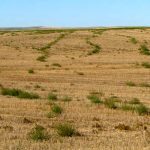
The silver bullet that wasn’t
Science Notes: Glyphosate’s declining weed control over 25 years
It has been a quarter century since corn and soybeans were engineered to withstand the withering mists of the herbicide glyphosate. Initially heralded as a “silver bullet” for weed control, […] Read more
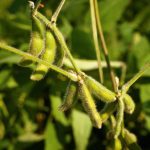
Project to sequence 400 soybean genomes, improve future crops
Science Notes: Team plans to consult stakeholders in deciding priority lines to include
Soybeans are an important crop worldwide as a source of protein and biodiesel for renewable energy. But is it performing to its full potential? An effort led by the University of […] Read more

Research could simplify process for calculating soil carbon credits
Science Notes: Results indicate that expensive in-field soil sampling may not be required
A study led by researchers at the Agroecosystem Sustainability Center at the University of Illinois Urbana-Champaign provides new insights for quantifying cropland carbon budgets and soil carbon credits, two important […] Read more

High oleic soybean oil works well in pig diets
Science Notes: Study also focused on carcass characteristics
Adding a fat source to the traditional corn-soy swine diet is common practice, but the type of fat can make a difference for growing pigs and carcass quality. Polyunsaturated fats, […] Read more

What keeps plant roots growing toward gravity?
Science Notes: Roots grown at a steeper angle could be more beneficial
What happens below ground in a corn field is easy to overlook, but corn root architecture can play an important role in water and nutrient acquisition, affecting drought tolerance, water […] Read more

Soil freeze and thaw spike nitrous oxide emissions
Science Notes: Computer simulation aims to determine hotspots
Nitrous oxide (N2O) may be much less abundant in the atmosphere than carbon dioxide (CO2), but it is 300 times more potent. University of Illinois and University of Minnesota have […] Read more
